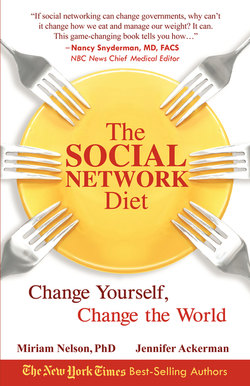Читать книгу The Social Network Diet - Michael Bertoldo - Страница 11
На сайте Литреса книга снята с продажи.
ОглавлениеLess milk and more sweet drinks. In general, we drink less milk than we did three decades ago and more sweetened drinks. Our intake of beverage milk dropped 33 percent from 1970 to 2008. Meanwhile, we started drinking more sodas and more fruit drinks, including fruit juice cocktails and ades, such as sports drinks. By 2008, our stores carried twice as much fruit drink (almost 13 gallons per person) as fruit juice (almost 7 gallons per person) and more than twice as much carbonated soft drink (almost 47 gallons per person) as beverage milk (around 21 gallons per person). The availability of carbonated soft drinks jumped 20 percent, from 39 gallons per person in 1984 to 47 gallons per person in 2008. That works out to roughly 250 12-ounce cans per year for each person. Now we also have a huge increase in fruit drinks, sports drinks, sweetened coffees, smoothies, iced tea, ades, and other sweetened beverages. In a single year, the average American drinks about 60 gallons of these sweet drinks, at a cost of $500 per person and an addition of some 85,000 calories.
The calories contained in beverages vary widely, from 50 calories to 250 calories in an 8-ounce serving. For teenagers and young adults, sugar-sweetened beverages, especially sodas, are the leading contributor to calories. Sodas and fruit drinks tend to add calories to our diet without providing nutrients. Fat-free or low-fat milk and 100 percent fruit juice may contain an equal number of calories, but they offer abundant nutrients as well. Sugar-sweetened sodas also contribute 36 percent of the total added sugars to the American diet. (If we simply removed these sodas from our food supply, Americans would be a lot better off. More about this in Chapter 3.)
Water and coffee and tea provide fluid for hydration with no calories, unless, of course, one loads them with sugar.
More cheese and meat. We eat close to four times as much cheese today as we did a half century ago, up from about 7.5 pounds per person per year to almost 30 pounds. This is almost entirely the result of eating more packaged and prepared foods containing cheese and cheese products, such as pizza, bagel spreads, burritos, nachos, and fast-food sandwiches. The average American also eats almost 200 pounds of meat, poultry, and fish each year—an increase of 50 pounds per person from a half-century ago. While our consumption of beef, pork, and lamb has remained stable over the past couple of decades, we’re eating a lot more chicken. We should be eating more fish.
More fruits and vegetables. In the good news department, per capita fruit and vegetable availability is up 19 percent since the 1970s. But we still don’t eat enough of these healthy foods. The average fruit and vegetable consumption for women is just under two servings of vegetables and one serving of fruit per day, about half the recommended amounts. Also, we tend not to seek variety. Much of the rise in consumption of fruits is limited to apples, bananas, and grapes—and a good share of it is in the form of highly processed snacks. The rise in vegetable consumption is primarily limited to tomatoes, onions, and leafy lettuces. Potatoes still dominate our vegetable intake and orange juice, our fruit consumption. Although I count a good old-fashioned baked potato as a vegetable, the majority of potatoes we eat these days come in the form of fries or chips or as part of a processed meal. And unfortunately, some 80 percent of total tomato consumption comes from processed tomato products such as sauces, canned tomatoes, tomato paste, and ketchup.
